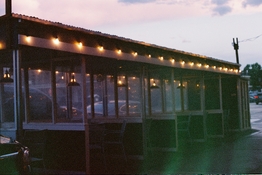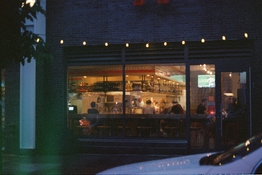NewDarkroom
Member
{Moderator note: this thread was split off of this one here: https://www.photrio.com/forum/threads/ecn-2-c41-stop-bath-via-glacial-acetic-acid.205046 }
If I am using Kodak Indicator Stop Bath for ECN-2 stop what dilution do you think I should use? I tried using 1+60 but am getting some green haze marks on the film and I think it is because the stop isn't strong enough. I also have 5% vinegar on hand, would it be better to use that? Any advice would be so greatly appreciated!
Sort of.
This is what he said to me when I inquired after it. The argument boils down to (1) getting rid of the developer, and (2) "my colleagues knew what they were doing so let's assume there is a reason". The extraction argument I believe should be seen in the context of high-volume machine processing, where the dwell time of the film in the stop bath is brief. In a home setup, you can easily extend the stop bath time and follow it with one or two rinses if so desired. I suspect that this ultimately achieves the same stability.
Btw, I also suspect that his wording was somewhat informal and not entirely accurate. CD remaining in the emulsion would oxidize at a later stage and thus pose a threat primarily to the unreacted dye couplers, not so much the already formed image-wise dyes.
Also, please don't take this the wrong way, but as in many, many cases, we end up in a situation where someone offers that "Photo Engineer said X or Y". This always ends up in a bout of "hermeneutics of the gospel of Mowrey" (which I'm certainly co-responsible for) and it only gets us so far. We should be cautious to not read more into his words than their literal meaning. And we should also keep in mind that his knowledge was sometimes (dare I say it...) limited - and he never argued otherwise! For instance, also on the topic of stop bath, I asked about citric acid for color processes and this is what he said:
Sometimes, Ron was just like the rest of us. He passed on what he remembered, informally so, and while is knowledge was encyclopedic, it was not absolute, infinite or infallible.
If I am using Kodak Indicator Stop Bath for ECN-2 stop what dilution do you think I should use? I tried using 1+60 but am getting some green haze marks on the film and I think it is because the stop isn't strong enough. I also have 5% vinegar on hand, would it be better to use that? Any advice would be so greatly appreciated!
Last edited by a moderator:

















 i do the prebath and then a 3min bath in 106F water to get up to temp before the dev goes straight in.
i do the prebath and then a 3min bath in 106F water to get up to temp before the dev goes straight in.